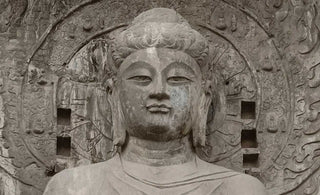
Introduction:
The ancient wisdom of Tibetan Buddhism has bestowed upon the world a profound and transformative practice – meditation. In this exploration of the "Path to Peace: Understanding Tibetan Buddhist Meditation," we delve into five key aspects that unravel the depth and significance of this spiritual journey.
1.Historical Roots and Philosophical Foundations:
Tibetan Buddhist meditation traces its origins to the teachings of Siddhartha Gautama, the historical Buddha, and evolved through the transmission of wisdom by Indian Buddhist masters. In the vast expanse of Tibetan Buddhism, meditation is grounded in profound philosophical frameworks such as Madhyamaka and Yogacara, emphasizing the understanding of emptiness, compassion, and the nature of the mind. Exploring these roots provides a contextual foundation for the meditative practices that follow.
2.Techniques and Practices:
Tibetan Buddhist meditation encompasses a rich tapestry of techniques designed to cultivate mindfulness, concentration, and insight. From Shamatha, the practice of calming the mind, to Vipassana, the insight meditation revealing the nature of reality, each technique serves a specific purpose on the path to peace. Tantric meditation, involving visualization and mantra recitation, adds a dimension of esoteric practices that guide practitioners towards a direct experience of enlightenment.
3.The Role of Mindfulness and Compassion:
At the heart of Tibetan Buddhist meditation lies the cultivation of mindfulness and compassion. Mindfulness, known as 'Tib. dran pa,' involves developing awareness of one's thoughts and actions, fostering a clear and focused mind. Compassion, or 'Tib. snying rje,' extends beyond personal boundaries, embracing all sentient beings. The union of mindfulness and compassion forms a powerful synergy, leading practitioners towards a profound understanding of interconnectedness and alleviating suffering.
4.Meditation in Monastic Traditions and Daily Life:
Monastic life forms the bedrock for the refinement of meditation practices in Tibetan Buddhism. The day of a monk or nun is a structured tapestry of spiritual activities, contemplation, and disciplined living. The day begins early with prayers, followed by chanting, study of sacred texts, and engaging in manual labor. Each activity, whether spiritual or mundane, becomes an opportunity for mindfulness. The rhythmic routine creates a conducive environment for the deepening of insight through meditation.
The daily routine of a Tibetan Buddhist monk or nun is meticulously designed to incorporate meditation seamlessly into every aspect of life. Whether engaged in manual labor, studying scriptures, or partaking in communal rituals, the practitioner remains mindful, using each activity as a gateway to a heightened state of awareness. Regular sessions of meditation punctuate the day, providing dedicated time for focused introspection and a direct communion with the divine.
The monastic environment offers a structured framework that nurtures sustained meditation practice. Silence and solitude are often emphasized, creating an atmosphere conducive to inner exploration. The architecture of monastic spaces is designed to foster a sense of tranquility, providing a physical manifestation of the spiritual journey within. The simplicity of monastic living, with minimal distractions, facilitates an immersion into the depths of one's consciousness.
Amidst the sanctity of monastic life, the Meditation Phase Wukong Buddha Statue Series emerges as an embodiment of artistic expression and spiritual symbolism. Inspired by the epic Journey to the West, this series, crafted from White Jade Marble, captures the essence of Oriental Art. The choice of White Jade Marble, known for its purity and elegance, adds a layer of transcendence to the artwork, mirroring the purity sought through meditation.
Monastic life in Tibetan Buddhism serves as a crucible for the refinement of meditation practices. Monks and nuns engage in rigorous daily routines, punctuated by sessions of meditation. The monastic environment provides a structured framework for sustained practice, fostering a deepening of insight and a harmonious integration of meditation into every aspect of life. Understanding how meditation permeates monastic traditions sheds light on the transformative potential within daily existence.
5.Meditation and the Path to Inner Peace:
The ultimate aim of Tibetan Buddhist meditation is to lead individuals towards inner peace and enlightenment. As practitioners progress along the path, they navigate the complexities of the mind, confront the illusions of the ego, and awaken.
The true essence of monastic life lies in the harmonious integration of meditation into every facet of daily existence. It is not confined to a specific time or space but seamlessly woven into the fabric of life. Whether engaged in chores, study, or communal activities, the monk or nun remains in a state of mindful presence, carrying the meditative spirit throughout the day. This integration extends beyond the monastery, influencing interactions with the external world.
The Wukong Buddha Statue Series, inspired by the Journey to the West, brings forth the symbolic journey of the Monkey King as a metaphor for the spiritual odyssey. Wukong's quest for enlightenment parallels the monk's journey to retrieve sacred scriptures, both encapsulating the transformative power of perseverance and inner exploration. The statues serve as visual reminders of the spiritual path, inviting practitioners to embark on their own quest for self-realization.
In conclusion, the synergy between monastic traditions and meditation forms the nucleus of Tibetan Buddhist spirituality. The daily routines, structured frameworks, and harmonious integration of meditation into every aspect of life create an environment conducive to profound insights. The Meditation Phase Wukong Buddha Statue Series, with its Oriental Art inspired by the Journey to the West, becomes not just an artistic creation but a tangible representation of the spiritual journey—one that resonates with the monk's pursuit of inner peace and enlightenment within the sacred walls of the monastery.

Meditation Phase Wukong Buddha Statue Series Journey to the West White Jade Marble Oriental Art























